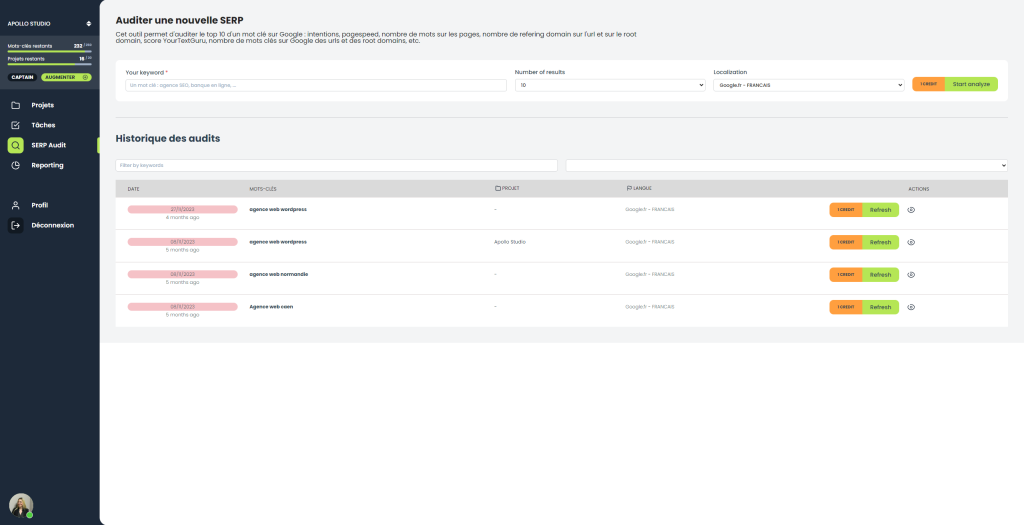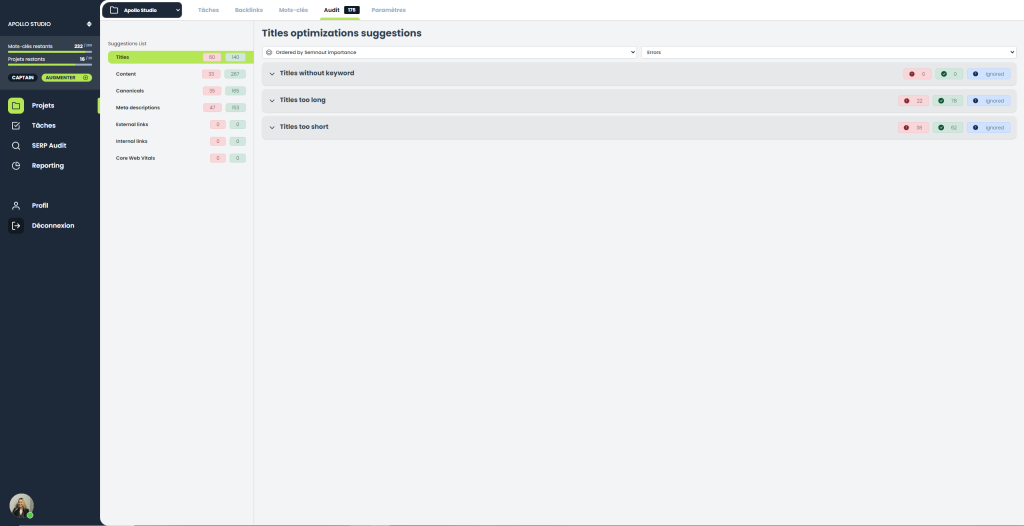Optimizing meta tags for better SEO
Meta tags are among the elements that influence a web page’s SEO. Properly optimizing them can improve a site’s visibility and attract more qualified traffic. Take a look at ⬇︎
The basics of meta tags
Meta tags are fundamental elements in the structure of a web page. Located in the HTML header, they provide important information to search engines, contributing to the optimization and referencing of a website.
What is a meta tag?
Meta tags are HTML tags located in the header ( section) of web pages. They define metadata, i.e. information about the page that is not displayed to visitors but is used by search engines.
In particular, meta tags can be used to provide information on the title, description, keywords, author, indexing robot and so on. They are therefore essential for website referencing.
What are meta tags for?
Les balises meta have several uses:
- Define the page title that will be displayed in search results
- Provide a description of the page below the title in search engines
- Indicate content-related keywords for referencing purposes
- Give instructions to search engine spiders
- Provide information on author, language, fonts, etc.
- Adapt display to mobile devices with the viewport tag
Meta tags optimize the way a web page is indexed and displayed by search engines. Good SEO depends to a large extent on quality meta tagging.
The most important meta tags for SEO
Although all meta tags are important, here are the 5 most important ones for improving your SEO:
- Title tag: defines the page title. It must be less than 60 characters long and contain the main keywords.
- Meta description tag: contains the summary below the title in search engines. Must not exceed 155 characters.
- Meta robots tag: tells indexing robots how to process the page. The value “noindex” prevents indexing.
- Meta viewport tag: adapts the display to mobile devices. Essential for a responsive site.
- Meta keywords tag: defines keywords related to page content. Useful but less of a priority.
SEO requires constant optimization, impossible without a global vision. With its comprehensive audit and automatic alerts, SEMNAUT detects your priority areas for improvement. A unique dashboard to identify high-impact actions at a glance. Your tailor-made optimization checklist is just waiting for you!
Optimizing the meta description tag
The meta description tag is crucial in encouraging visitors to click on your page in search results. Here’s how to optimize it.
Optimum length
The meta description must not exceed 155 characters to be visible in full in Google’s results pages. Beyond that, the text will be truncated with suspension points.
Your descriptions should be concise, yet engaging and informative. Between 150 and 155 characters is generally a good compromise.
Include the main keyword
To maximize your chances of appearing on a given query, the meta description must contain the main keyword or expression targeted.
This keyword should be placed naturally in a coherent sentence, without forcing SEO. Ideally, it should be positioned at the beginning of the description.
Write an attractive description
The meta description must make the visitor want to click, by summarizing the strong points of the page’s content.
To achieve this, adopt an engaging style, using vocabulary that’s relevant to your target audience, and highlight the benefits or information the visitor will find.
A unique, well-crafted description increases your chances of attracting qualified visitors.
Call to action
Including a call-to-action at the end of the meta description can be very effective. It can be an invitation to discover (“Discover our X tips to get there”), to buy (“Order now”) or to subscribe (“Sign up for our newsletter”).
This call to action encourages visitors to click to find out more or take action. Be careful, however, to keep the description informative and friendly, and not overly promotional.
Make each description unique
Having identical or very similar meta descriptions on several pages of the same site is penalizing.
It’s up to you to create unique descriptions, specific to the content of each page.
SEO tools make it easy to detect duplicate meta descriptions.
Optimizing the title tag
The second key element of the meta tags, the title tag, also known as the page title, must also be optimized.
Recommended length and number of words
The title tag should not exceed 60 characters, including spaces. Beyond that, the title will be cut off in the results pages.
Ideally, aim for between 50 and 60 characters and use between 3 and 6 keywords maximum.
A title that’s too long dilutes the important words. Too short and it lacks precision.
Include relevant keywords
As with the meta description, the title tag must contain the main descriptive keywords of the page’s content.
These should appear as early as possible in the title tag, preferably within the first 10 words.
Creating clickable page titles
Duplicate page titles are detrimental to SEO. Each page should have a unique title specific to its content.
For example, include the brand name at the beginning of the title, followed by the main keyword and a differentiating element.
Avoid capital letters in the middle
Titles written entirely in capital letters or with capital letters in the middle of words are less well perceived by search engines.
Opt for capitalization only at the beginning of titles and on proper nouns.
SEO is a never-ending work of optimization. It’s impossible to see the big picture! With its intelligent audit and automatic alerts, SEMNAUT streamlines your continuous improvement process. This saves you precious time, allowing you to concentrate on the essentials: strategy!
Other useful meta tags
In addition to title and meta description tags, here are a few other interesting meta tags to use to improve your SEO and visibility.
Meta robots tag
The meta robots tag tells search engines how to index and track (or not) a given page. The main values are :
- noindex: the page should not be indexed.
- nofollow: links should not be followed.
- noarchive: no caching allowed.
Meta viewport tag
Essential for a responsive site, this tag adapts the display to mobile devices by defining the page’s width and zoom.
Example: <meta name=”author” content=”Jean Dupont”>
Meta language tag
Indicates the main language of the page. Useful for local referencing.Indicates the main language of the page. Useful for local referencing.
Example : <meta http-equiv=”content-language” content=”fr”>
Author meta tag
Defines the author of the page. Can help visibility if this is recognized.
Example: <meta name =”author” content=”Jean Dupont”>
What makes Semnaut the perfect tool for optimizing your meta tags?
Semnaut’s Page Change Monitor feature automatically monitors any changes made to a site’s pages, including meta tags. This means you can quickly detect whether a meta tag has been modified or deleted by mistake.
The SEO audit function analyses meta tags in depth and generates a detailed report on any problems or optimizations to be carried out. This gives you an overview of the quality of your markup and any improvements that need to be made.

Finally, alerts and suggestions warn of missing or too-short meta tags, etc., and the tool directly offers recommendations for correcting these weak points. And the tool directly proposes recommendations for correcting these weak points.

Thanks to these features, Semnaut is the ideal tool for monitoring meta tags on an ongoing basis, and thus improving your SEO.
